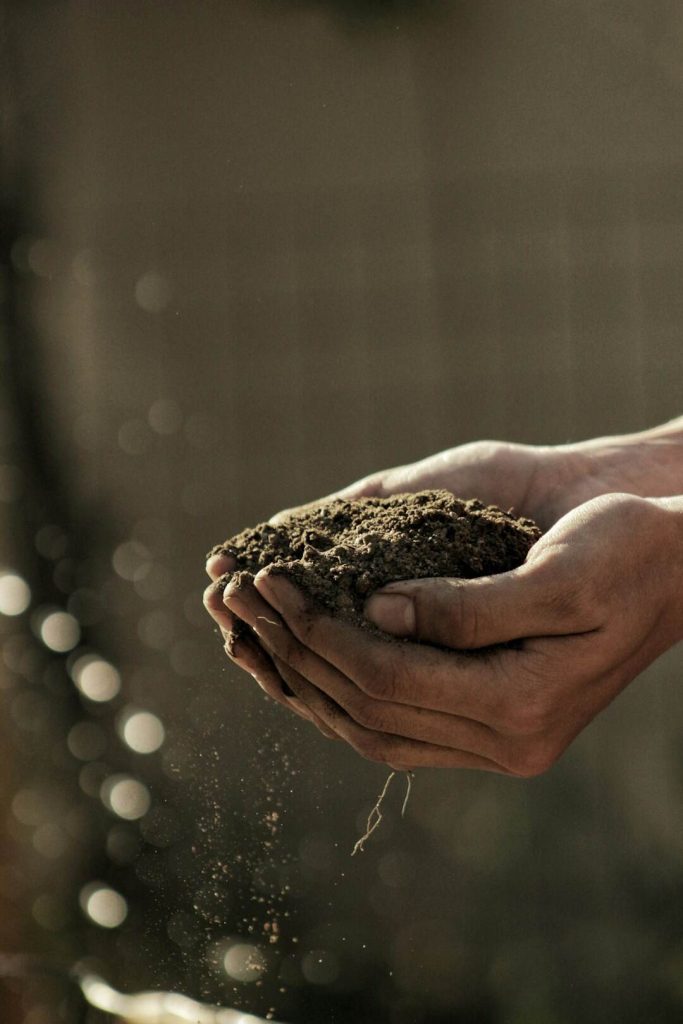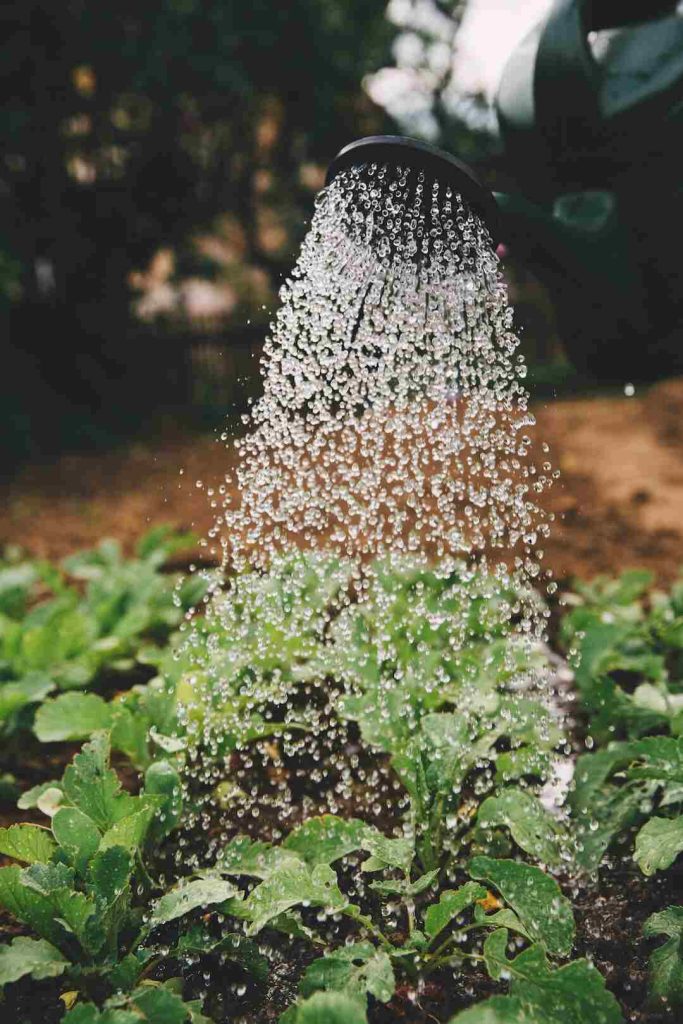Coffee grounds include many properties that have long been admired for their ability to revitalize soil and enhance plant growth. They offer numerous benefits over traditional fertilizers; not only are they cost-effective, but they also reduce waste by repurposing what would otherwise end up in the trash.
Why Use Coffee Grounds for Your Garden?
coffee grounds are rich in nitrogen, phosphorus, and potassium; the holy trinity of essential nutrients that plants need to thrive. These nutrients play vital roles in plant growth – from strengthening stems and foliage to promoting vibrant blooms and bountiful harvests.
By incorporating coffee grounds into your garden soil or compost pile, you’re providing a nutrient-rich boost that will help nourish your plants throughout their growing cycle.
Coffee grounds improve soil structure by increasing its ability to retain water while still allowing adequate drainage. they attract earthworms – nature’s plowmen – who tirelessly tunnel through the soil creating pathways that promote better root growth.
How these nutrients benefit plants’ growth
The abundance of nutrients found in coffee grounds contributes to healthier soil conditions which ultimately translate into optimal plant growth. Nitrogen promotes vibrant green foliage while encouraging steady vegetative growth.
This results in stronger stems that can support heavy fruits or flowers without collapsing under their weight.
Phosphorus stimulates strong root systems which enhance water uptake efficiency from watering or rainfall sources – ensuring adequate hydration for your plants even during dry periods. This nutrient also encourages earlier flower bud formation leading to more abundant blooms.
Potassium strengthens cells walls making them resistant to pests or diseases thereby safeguarding your garden against potential threats throughout the growing season.
Calcium aids in preventing common problems such as blossom end rot – often seen on tomatoes – by facilitating proper cell division within developing fruit structures.
Magnesium’s prominent role lies within its contribution to chlorophyll synthesis; thus ensuring healthy leaves capable of efficiently converting sunlight into energy through photosynthesis.
Using Coffee Grounds as Soil Amendment

Preparing the soil for optimal growing conditions
Before using used coffee grounds into your garden soil, ensure that the existing soil is ready to receive this nutrient-rich amendment. Start by testing the pH level of your soil using a simple at-home kit available at most gardening stores.
Coffee grounds tend to be slightly acidic, so if your soil already leans towards acidity, you might want to consider balancing it out by adding some lime or wood ash.
To prepare your garden bed, remove any weeds or debris and loosen up the soil with a garden fork or tiller. This will improve drainage and aeration, allowing roots to grow freely in loose, enriched earth.
Different types of soil (clayey, sandy)
Regardless of whether you have clayey or sandy soil in your garden, spent coffee grounds from your local coffee shops can play a beneficial role when used as a natural fertilizer and conditioner.
For clayey soils that struggle with poor drainage and compacted structure, adding coffee grounds can help break down heavy clay particles over time while improving water permeability and promoting root growth.
Sandy soils are notorious for their low nutrient retention capability due to their coarse texture. Adding coffee grounds helps increase organic matter content in sandy soils, significantly enhancing water-holding capacity and aiding in fertility regulation. As coffee grounds break down, they continue to release nutrients into the soil.
When incorporating coffee grounds into both types of soils during planting time or throughout the growing season, make sure not to sprinkle them directly on top of plants as it may lead to nitrogen imbalance or burn delicate foliage instead incorporate them gently into the top few inches using a rake or cultivator tool—this way they’ll gradually release nutrients without causing harm.
Adding nitrogen-rich material to compost pile using spent coffee filters
Coffee grounds, with their high nitrogen content, are an excellent addition to boost the decomposition process and create nutrient-dense compost.
But don’t overlook those used coffee filters! They may seem like a waste, but spent coffee grounds can actually be added directly to your compost pile.
Before tossing them in, make sure to tear or shred the filters into smaller pieces to aid in faster breakdown. Coffee filters are biodegradable and will break down over time, adding valuable organic matter and increasing the overall carbon-to-nitrogen ratio in your compost mix.
Common questions regarding mixing ratio and frequency
One common question that arises when using coffee grounds as a compost additive is about the mixing ratio:
how much should you add? A general rule of thumb is to add no more than 20% coffee grounds by volume when making your own hot composter or vermicompost bin – this ensures that there’s still a good balance between carbonaceous materials (like leaves or straw) and nitrogen-rich components (like kitchen scraps).
As for frequency, incorporating coffee grounds into each layer of your compost pile or bin every few weeks provides an even distribution of nutrients throughout the decomposing material. Remember not to clump all the coffee grounds together in one area; instead, aim for consistent dispersion.
By following these guidelines and adjusting based on your specific needs and garden conditions, you’ll be well on your way to creating richly nourishing compost that will do wonders for enhancing plant growth while reducing waste at the same time! So don’t hesitate – start harnessing the power of those leftover morning brews today!
Tackling Pest Problems with Coffee Grounds
Repelling Slugs, Snails, Ants, and Other Pests
Coffee grounds can be an effective way to keep pesky pests at bay in your garden. Slugs and snails are notorious for devouring leaves and damaging plants, but they have a strong aversion to coffee grounds.
By sprinkling a barrier of coffee grounds around the base of susceptible plants or creating small mounds near vulnerable areas, you can deter these slimy creatures from wreaking havoc on your precious greenery.
In addition to slugs and snails, ants are another common nuisance that can disrupt your garden ecosystem. Luckily, coffee grounds act as a natural ant repellent due to their strong scent and abrasive texture. Sprinkle coffee grounds along the entry points or nesting areas of ants to discourage their presence in your garden.
Creating Barriers Around Vulnerable Plants
Coffee grounds also serve as physical barriers that protect plants from certain pests like slugs, snails, and even cats who may use your garden as their personal litter box. These critters dislike crossing over the rough texture of coffee grounds when it’s spread around susceptible plants.
To create a barrier using coffee grounds:
1. Collect used coffee grounds from your morning brew or ask local cafes for their discarded ones.
2. Allow the collected coffee grinds to dry out before applying them.
3. Carefully sprinkle a thick layer (about half an inch) of coffee grounds in your garden around individual plants or create concentric rings around groups of plants.
4.Cover any exposed soil with additional mulch materials such as wood chips or straw to retain moisture and further enhance the protective effect.
Remember to replenish the barrier periodically as rainwater will wash away some of the coffee ground defense over time . With this simple yet powerful technique , you’ll find peace knowing that those pests won’t stand a chance against your thriving garden!
Coffee Grounds for Encouraging Plant Growth

Promoting acid-loving plants health
If you have a garden full of acid-loving plants like roses, blueberries, or azaleas, coffee grounds can be a game-changer. These plants thrive in acidic soil conditions, and coffee grounds can help create the ideal environment for their growth.
The natural acidity of coffee grounds works as a perfect soil amendment to lower the pH levels, making it more suitable for these plants.
To utilize coffee grounds effectively for your acid-loving plants, sprinkle them around the base of the plant but keep them away from direct contact with leaves or stems to avoid potential burns.
As time passes and rains occur, the nutrients present in the coffee grounds will slowly release into the soil and promote vigorous growth. This practice helps improve water retention in sandy soils commonly found in gardens by incorporating coffee grounds on the top of the soil.
Enhancing seed germination
Getting seeds to successfully sprout is often a challenge even for seasoned gardeners.
When preparing your planting mix or potting soil mixture for starting seeds indoors or transplanting them outdoors, add some well-dried coffee grounds into it before moistening it thoroughly with water. The gritty texture of the coffee grounds improves drainage while also providing necessary nutrition that stimulates root development.
Caffeine present in used ground waste may assist in reducing fungal pathogens within newly planted seeds and young emerging sprouts through its antifungal properties – yet another reason why using old coffee instead of fresh might offer better results during this stage! With enhanced seed germination thanks to simple additions like recycled warms failed attempts at caffeinated delights- what’s holding back form tapping into nature’s bounty?
Final Thought
coffee grounds have proven to be a versatile and valuable resource for gardeners looking to boost their gardens naturally. From soil amendment to composting, pest control to plant growth promotion, there are countless ways in which coffee grounds can enhance the health and vitality of your garden.
Use coffee grounds in moderation as excessive amounts can alter the pH level of the soil. Keep an eye on plant response and adjust accordingly. when using fresh coffee grounds directly in the garden, it’s advisable to mix them with other organic materials like leaves or straw for better moisture retention and decomposition.
Happy gardening!
FAQ:
Q: Which plants benefit most from coffee grounds?
A: Acid-loving plants benefit the most from coffee grounds. These include azaleas, rhododendrons, camellias, gardenias, and blueberries. its can help lower the pH level of the soil, providing a more acidic environment which these plants prefer.
Q: Do coffee grounds in the garden attract rats?
A: Yes, coffee grounds can attract rats as they are drawn to strong smells and potential food sources. However, if used in moderation and mixed well with other compost materials, the risk of attracting pests can be minimized.
Q: How to dry coffee grounds for the garden?
A: To dry coffee grounds, spread them out on a flat surface like a baking sheet or newspaper in a cool, dry area away from direct sunlight. Allow them to air-dry for a few days, stirring occasionally to break up clumps and ensure even drying.
Q: Is coffee grounds bad for plants?
A: Coffee grounds are not inherently bad for plants, but they should be used with caution. They are rich in nitrogen, which is beneficial to plant growth, but their acidity can affect soil pH. It’s important not to over-apply them, and they should ideally be composted before use to avoid potential issues with acidity and to allow beneficial microbes to break down the compounds within the grounds.
Q: What are some other ways to use coffee grounds in the garden?
A: In addition to using coffee grounds as fertilizer or mulch, they can also be diluted and used as a liquid fertilizer for plants.


Leave a Reply